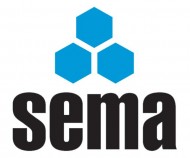Our first question this month looks at how to correctly identify the working load on fabricated racks that have been welded in house. The second explores the importance of frame bracing in racking.

Fabricated racks and their safe working load
Q. We have fabricated racks locally for storing oil well completion equipment at our facility in West Africa. The racks were made by our welders however there were no design drawing or calculations made before the racks were built. How best can I determine their safe working load?
A. Your problem, (and we are assuming they are welded racks) is likely to be one of the material variables. If you could identify all the section sizes of the components making up the rack and the grades of steel used in the fabrication you could get a qualified structural engineer to calculate a safe load for you. You should be able to find someone locally who would do the work more quickly and be more economically than using someone form the UK. Unfortunately some assumptions would have to be made about the quality of the welds however it should be possible to carry out a reasonably accurate reverse engineering process to assess a safe working load.
Ultimately the simplest option might be to have one or several sample racks tested to destruction using some loads of known weight and a factor of safety applied to the collapse load that you discover. It will be necessary to include a large margin as obviously you are testing one of a batch and the remainder will perhaps be of a different quality. Normally when doing this you will need to have the tests independently witnessed so there is corroboration of the results.
There are various European codes of practice around that help engineers to design storage racks however without knowing what kind of rack you have made it is a little difficult to advise. If you have a digital camera to e-mail some photographs perhaps we can be of more help.
The importance of frame bracing
Q. I have received an enquiry from a member of IOSH, and unfortunately we do not have access to SEMA’s latest guides.
The question is regarding frame bracing which points inwards rather than outwards and I have found the following reference and I would like to know if this is still correct.
“Frame Bracing: The importance of bracing is sometimes underestimated. Frame bracing can help to reduce impact damage to uprights. Frames must be braced to the manufacturer’s standards. A number of frames have been installed the wrong way around with the base diagonal pointing to the inside of the rack rather than the outside. The client should seek assurances from the supplier/installer that this is acceptable and that this does not affect the load carrying capacity of the rack.”
A. The note regarding the frame bracing is generally correct, although the bracing is not only there to reduce impact damage, it is also very important for the safe load capacity of the upright.
The racking manufacturers require their frames to be installed to a specific orientation (not the same way for all manufacturers) and the advice that ‘The client should seek assurances from the supplier/installer that this is acceptable and that this does not affect the load carrying capacity of the rack’ is correct.
If there are row spacers between back to back runs of racking, these should connect adjacent to the back to back bracing nodes. If one frame is the wrong way round then the row spacers may not effectively tie the two back to back frames together.
The annual inspection of the racking should identify the issues specific to the site in question and should provide the appropriate recommendation for the client.
SEMA is delighted to be working with WLN on the storage Question and Answer Column. On the WLN website is a list of previously published columns which we hope you find useful.
SEMA Technical Enquiries
We hope you find the above articles interesting. If you have a query send it to us and we will do our best to have it answered.
SEMA Rack Safety Awareness and Inspection Courses
SEMA runs a one-day safety course on Rack Safety Awareness and Inspection. These courses are aimed at end users, giving an in-depth look at the need for inspections, how to conduct an assessment and what actions to take when this is completed.
SEMA Approved Rack Inspectors Qualification
This qualification is aimed at professionals who conduct rack surveys as an integral and significant part of their duties. It involves delegates in undertaking an in-depth SEMA Course, together with an examination and practical assessment. CPD will be an important part of the qualification, demonstrating to end users that SEMA Approved Inspectors maintain a high professional standard.
SEMA USERS Club
SEMA runs a USERS Club designed to be of benefit to purchasers and users of storage equipment. Members receive newsletters, access to specialised events and discounted rates on publications and codes of practice.




Comments are closed.